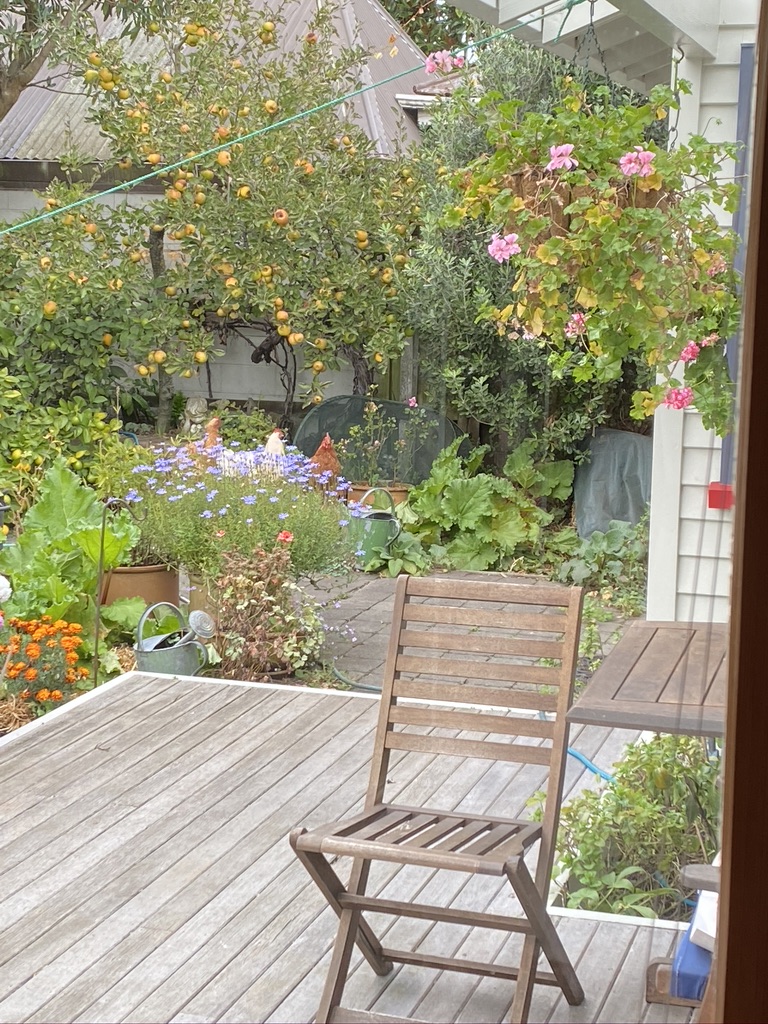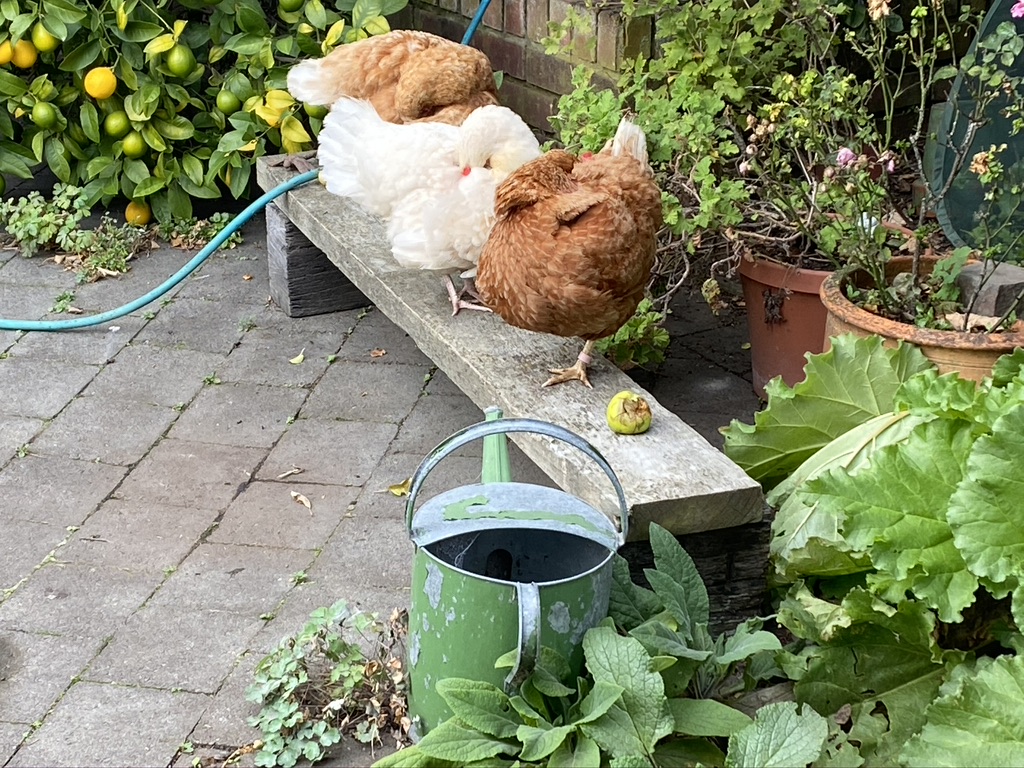After I had cleared some creeping campanula which was taking over the barrel of polyanthus, I noticed two mushroom-like shapes emerging from the soil. On closer inspection, I decided they were puffballs. To my surprise, a day or so later they had turned into this:

Had a child’s geodesic dome toy landed there – or perhaps something from outer space? It had the look and feel of plastic. When I looked closely, I could see how it had formed out of the two “puffballs”:

In a couple of days it had crumpled and collapsed, by which time another one was emerging:

It was popping out of its pod looking like a scrunchie.
Then I recalled seeing it growing under trees at the beach and discovering that it is called a basket fungus, so I looked it up. The Maori names include tutae kehua (ghost dung) and tutae whetu (star dung). It is native to New Zealand and also found in Australia and South Africa. This site, with interesting photos, also identifies it as a buckyball stinkhorn. I didn’t sniff too hard, but any bad smell wasn’t obvious in my specimens.
I wrote a post called Inexcusable Ignorance (August 11, 2019) after observing a very delicate pale grey fungus on the lawn. It looked a little like the crowd of hattifatteners in the Moomin stories. I felt strongly the need to learn more about everyday things in the garden. Well, my head is bursting with information now. A Compendium of Collective Nouns informs me that, rather than crowd, the correct term is colony of fungi – “a batch of fungi that has grown from a single spore or cell – that is, a clonal colony.” A question on the television quiz show QI was: “What is the largest living thing on the planet?” There were the usual responses: “The blue whale”, “The Redwood tree”. The answer was a massive fungus, which must be the one referred to in A Compendium of Collective Nouns: “In the forests of Eastern Oregon, a clonal colony of the fungus Armillaria solidipes has spread across twenty-two hundred square acres, and is estimated to be twenty-four hundred years old.”
A Radio New Zealand article I found states: “There are tens of thousands of fungus species in New Zealand”. A competition to vote for the favourite fungi was run at the 32nd annual New Zealand Mushroom Foray. The basket fungus came second. The Maori term used for it in the article is matakupenga which, on looking up, I found is also a design used in Maori carving symbolising the life force between the living and the ancestors. The winner of the competition, a stunning blue fungi, appears on our $50 dollar note, I was surprised to discover. There are great pictures on the RNZ link.
The New Zealand Mushroom Foray conjures up wonderful mental images. It reminds me of the Mushroom Pickers’ Ball in the Polish book Drive Your Plow over the Bones of the Dead by Olga Tokarczuk (who won the Nobel Prize in Literature 2018) which I have recently laughed till I cried over (surprising, as the title doesn’t suggest hilarity). I never imagined there would be a similar group here in NZ. Which all goes to show that the more you learn the more connections you make, the less ignorant you are, the more fun you have, and the more you appreciate the world and our tenuous place in it.


